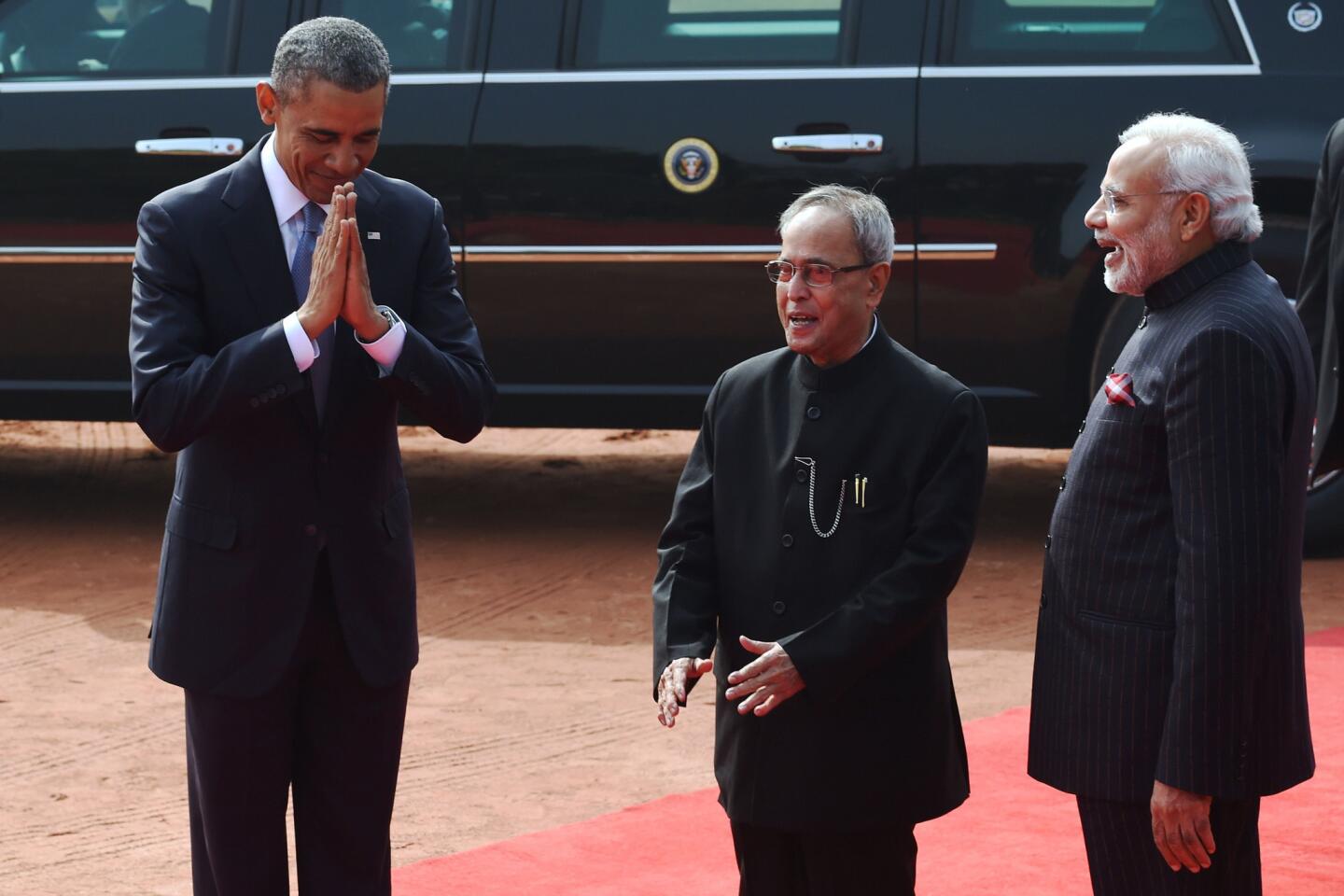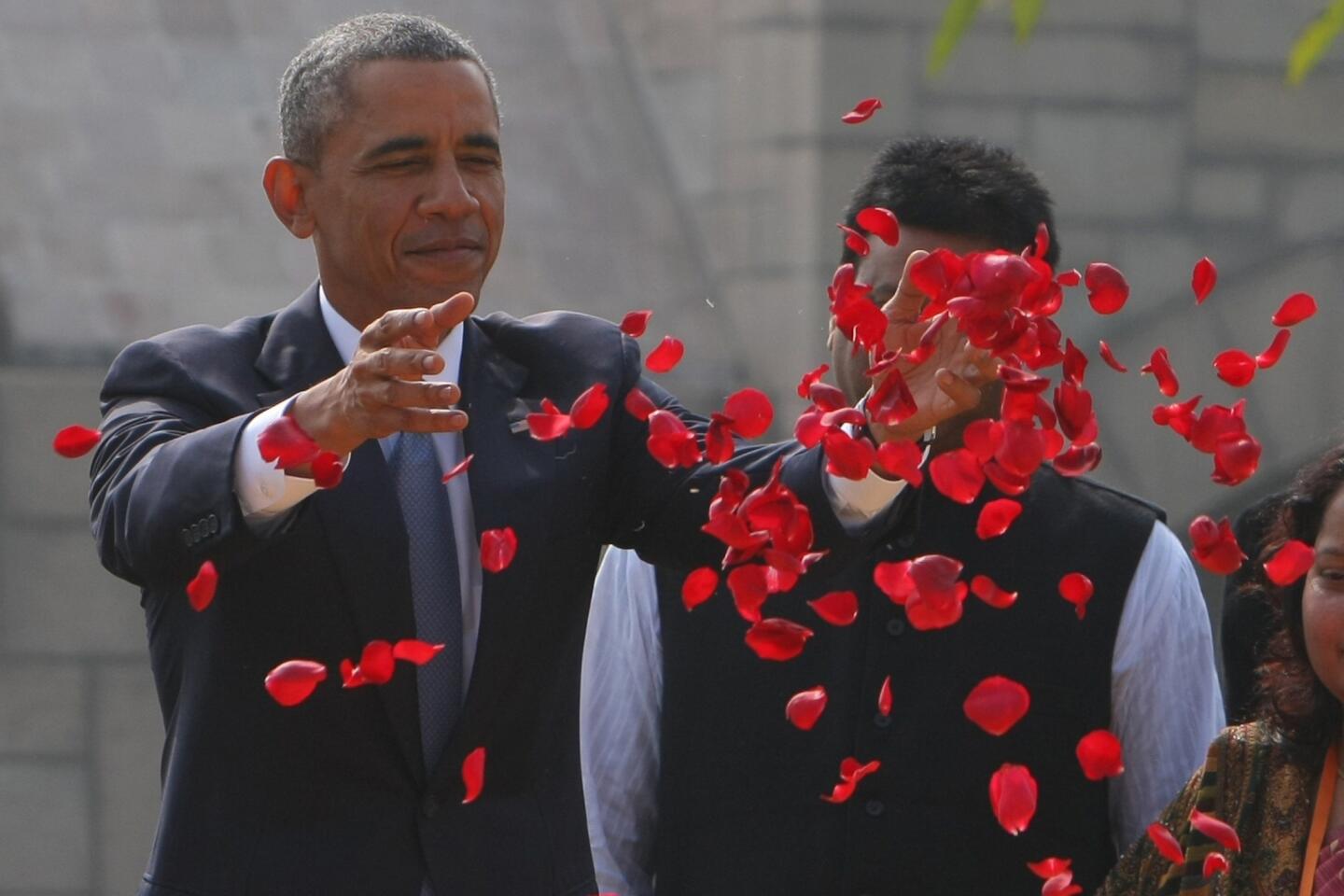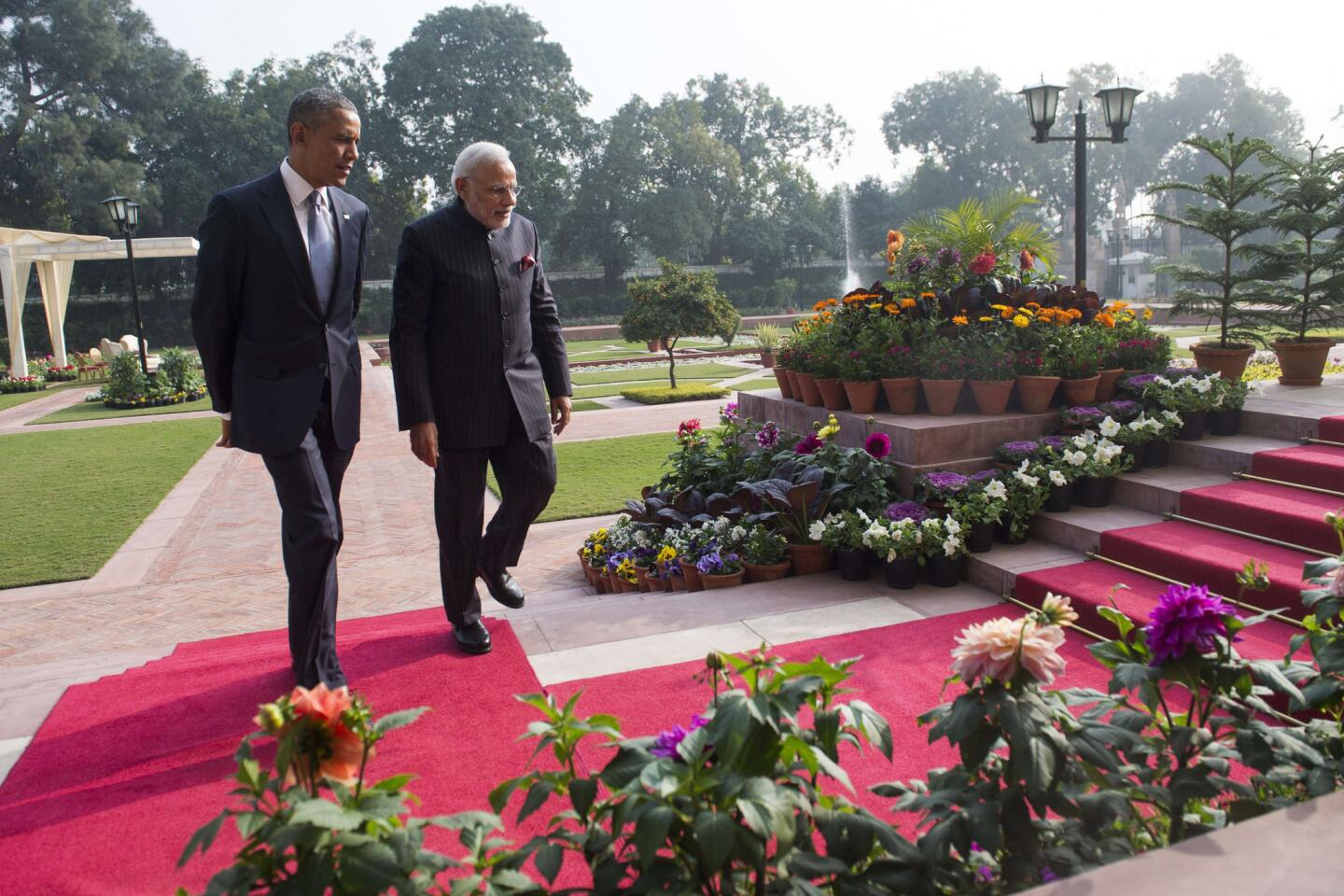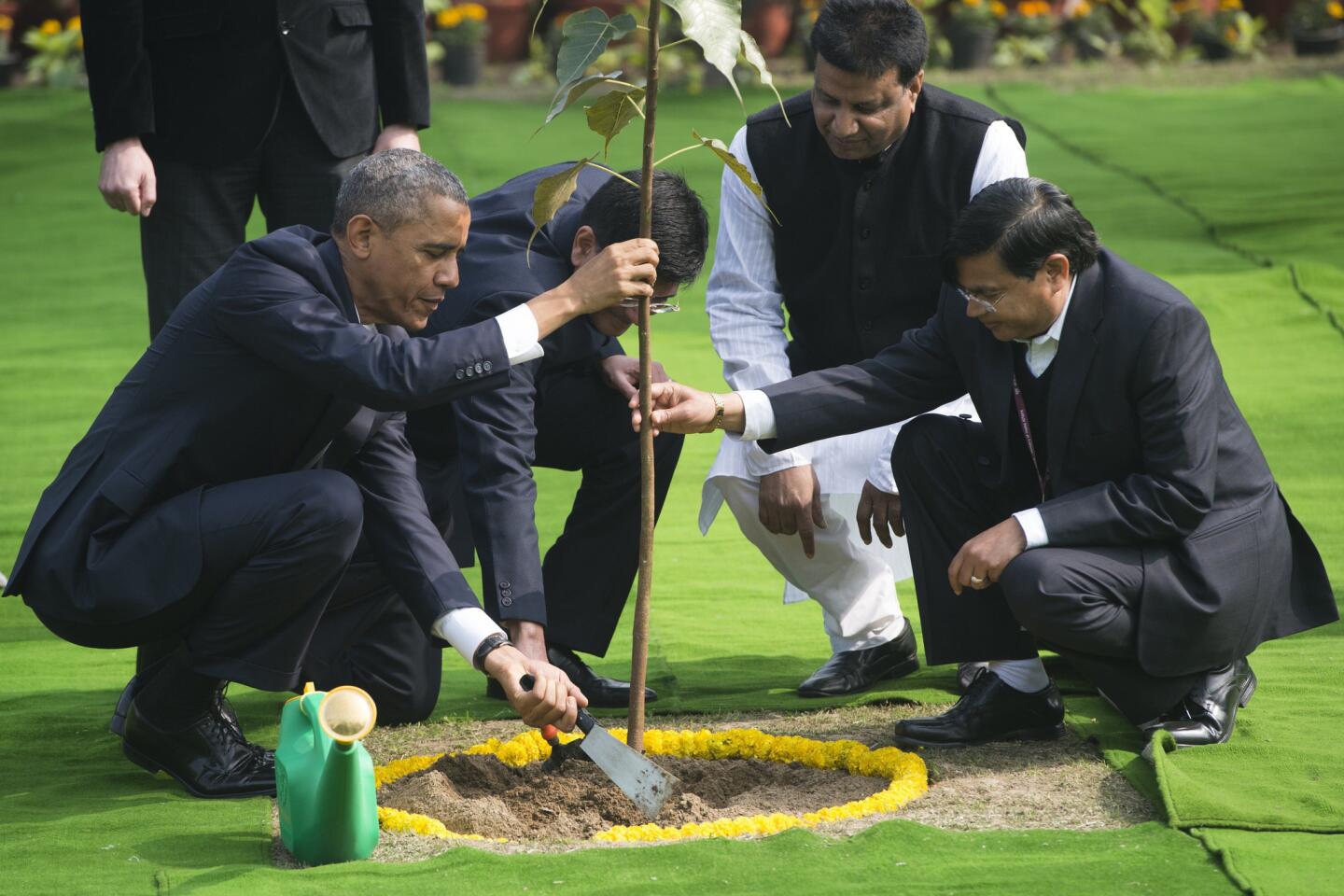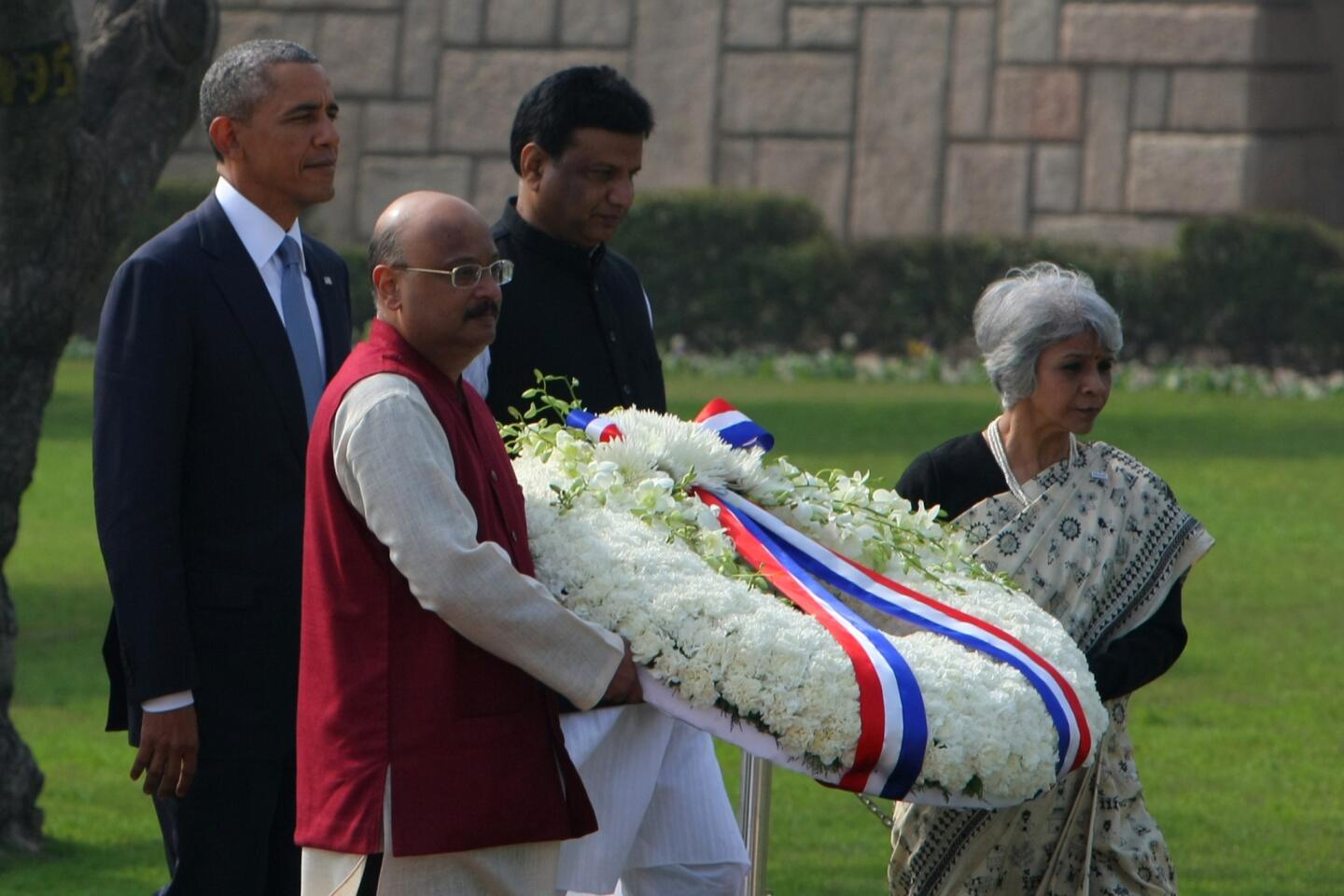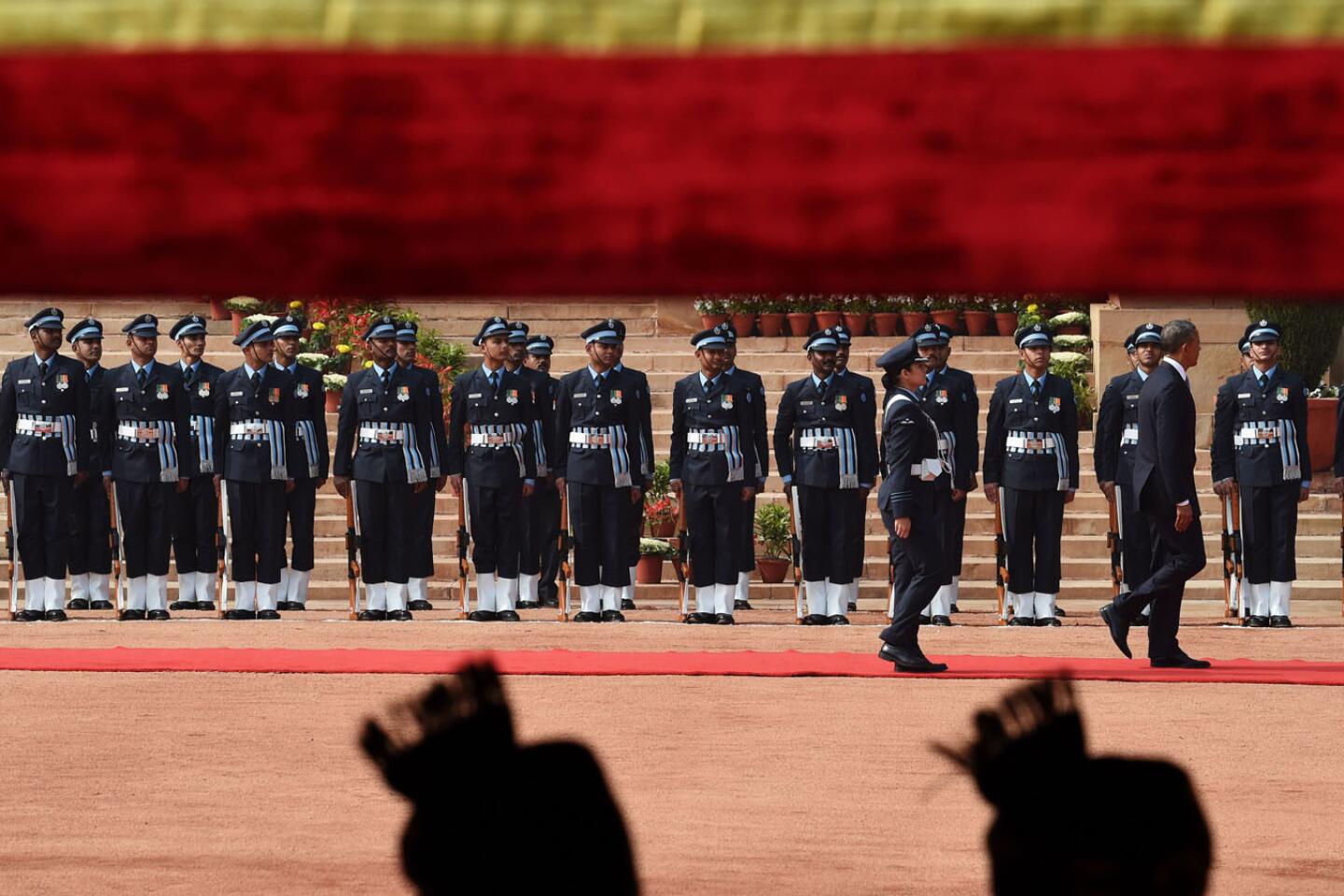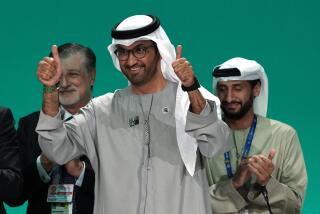Narendra Modi dismisses calls for India to match China’s climate goal
The United States and India sought to put a contentious history behind them Sunday by declaring a new partnership on climate change, security and economic issues, but Prime Minister Narendra Modi rejected calls for India to match China’s commitment to reducing greenhouse gas emissions.
As President Obama opened a three-day visit to New Delhi aimed at underscoring the two democracies’ shared ideals, Modi’s blunt dismissal of a sweeping climate agreement reflected the limits of Washington’s assiduous courtship of the popular new prime minister.
Even as Obama announced “a breakthrough understanding” that could clear the way for U.S. companies to build nuclear power plants in India — potentially reducing India’s heavy reliance on fossil fuels — Modi said he felt “no pressure” from any other country to curtail the South Asian nation’s carbon emissions.
Instead, the U.S. said it would cooperate with India in clean-energy initiatives such as expanding solar power, reducing the most toxic greenhouse gases and making air-conditioners more efficient — without demanding that it slow the rapid growth of its coal industry.
“India is a sovereign country,” Modi said during a joint news conference with Obama. “There is no pressure on us from any country or any person, but there is pressure when we think about the future generations and what kind of world we want to give them.”
It was a rare discordant note at the start of a largely ceremonial visit that the Obama administration hoped would demonstrate U.S. commitment to improving ties with India and would energize a strategic “pivot” to Asia.
The countries renewed a 10-year defense partnership and agreed to expand that collaboration. Modi said the countries would “pursue co-development and co-production of specific advanced defense projects.”
The meeting between the two leaders was rich in atmospherics, with Obama and Modi sharing a warm hug at the foot of the Air Force One stairs moments after the plane landed in New Delhi.
After a summit at the White House in September, this visit — coming sooner than many U.S. and Indian officials had expected — was seen as a signal that both countries want to move past years of often difficult relations.
On Monday, Obama is scheduled to be the first U.S. president to attend India’s annual Republic Day celebration, where he would be Modi’s chief guest at an hours-long parade.
Many U.S. and Indian officials saw Modi’s invitation to Obama as a sign that the Indian leader bore no ill will from a decade-long visa ban imposed by the State Department over his failure to stop religious pogroms in 2002 in the western state of Gujarat, where he had served as chief executive.
Both leaders cited progress on an agreement to provide nuclear power to India for civilian use that has been stalled since a pact in 2005. U.S. officials said negotiators from both countries had resolved issues that had blocked implementation of the agreement — accounting for the nuclear material produced by U.S. companies and liability in case of an accident.
“Today we achieved a breakthrough on two issues that were holding up our ability to advance our civil-nuclear cooperation, and we’re committed to moving toward full implementation,” Obama said. “This is an important step that shows how we can work together to elevate our relationship.”
India has agreed to allow two U.S. companies, Westinghouse and General Electric, to build nuclear plants at designated sites, but the plans foundered after India’s Parliament passed a 2010 law that would hold nuclear suppliers liable in an accident. Over the years, the nuclear logjam has come to symbolize the misunderstandings and missed opportunities in the U.S.-India relationship.
Indian news media reported that the U.S. agreed to drop a requirement for strict tracking of all nuclear material produced by U.S.-built reactors, which India had long argued was costly and redundant. India is already party to a system under the International Atomic Energy Agency, the United Nations nuclear watchdog, to account for nuclear material and ensure it is used for civilian purposes, officials say.
Indian officials have also offered to create an insurance pool to shelter nuclear suppliers from liability in case of an accident, overcoming a key concern of U.S. companies, according to reports.
Indian analysts welcomed the nuclear agreement but said it would be up to U.S. companies to produce power at competitive rates in a country where coal-fired electricity is sold at some of the cheapest prices anywhere.
“If reactors are built and they supply only very expensive electricity, that is clearly not going to be a good answer,” said M.R. Srinivasan, a leading nuclear scientist and former member of India’s Atomic Energy Commission. “But if hurdles are removed, that is a good thing and you can get on to seeing whether we can get workable projects going.”
The nuclear agreement is just one in a series of steps India must take to reduce its dependence on fossil fuels. Over the next year Obama hopes to help negotiate a global action plan to rein in runaway climate change, but a meaningful agreement would call for a major commitment from India, the world’s No. 3 emitter of greenhouse gases.
Pressure on India increased after the U.S. persuaded China, the No. 2 polluter, to agree in November to cap carbon emissions by 2030.
But as India embarks on a major phase of industrialization, many in Modi’s government believe that building heavily polluting coal power plants, which provide electricity at far cheaper rates than solar and wind power, is the most practical way to speed provision of electricity to the 300 million Indians who lack it.
Modi swept into power in May promising to revitalize India’s slowing economic growth. Since then, Indian authorities have tried to crack down on environmental groups such as Greenpeace that have campaigned against massive coal projects, accusing them of acting against India’s national interests.
But Indian officials have also raised coal taxes to generate money for clean-energy projects and announced plans to boost solar power capacity fivefold to 100,000 megawatts by 2022.
To support that goal, Obama administration officials announced expanded cooperation on green technology, including up to $1 billion in financing from the U.S. Export-Import Bank for clean-energy projects.
The warming in relations between Obama and Modi, beginning at their meeting in September, gave U.S. officials hope for progress on climate issues. Modi surprised some U.S. officials by saying he and Obama had agreed to “consult and cooperate closely” on climate change, pronouncing it a “strong priority” for both men.
Although most of Sunday was the usual public performance of a state visit, with on-camera handshakes and a formal dinner, the two leaders spent 20 minutes walking alone in the garden at Hyderabad House, a stately official venue, pausing midway through for a long talk over two cups of tea.
Later, at a joint news conference, there was obvious warmth between the two men, both of whom are often described as insular. The famously businesslike Modi repeatedly called Obama by his first name. Obama joked that Modi was “greeted like a Bollywood star” during a speech at Madison Square Garden in New York in September.
“Barack and I have forged a friendship,” Modi said. “There is an openness when we talk. We share a lot together.” Obama later said one thing they discussed was how little sleep each was getting.
For more news from India, follow@SBengali on Twitter
More to Read
Start your day right
Sign up for Essential California for news, features and recommendations from the L.A. Times and beyond in your inbox six days a week.
You may occasionally receive promotional content from the Los Angeles Times.
